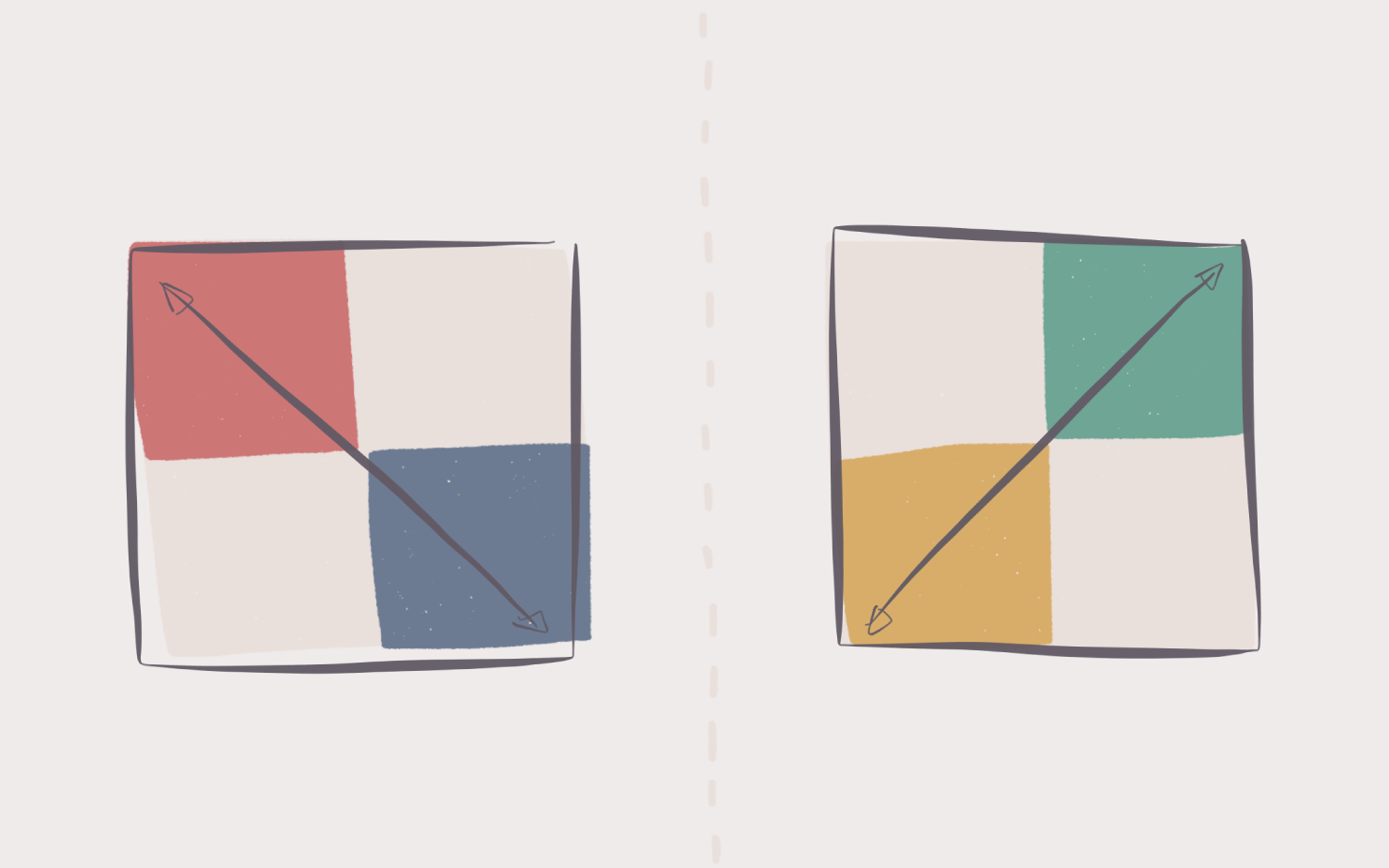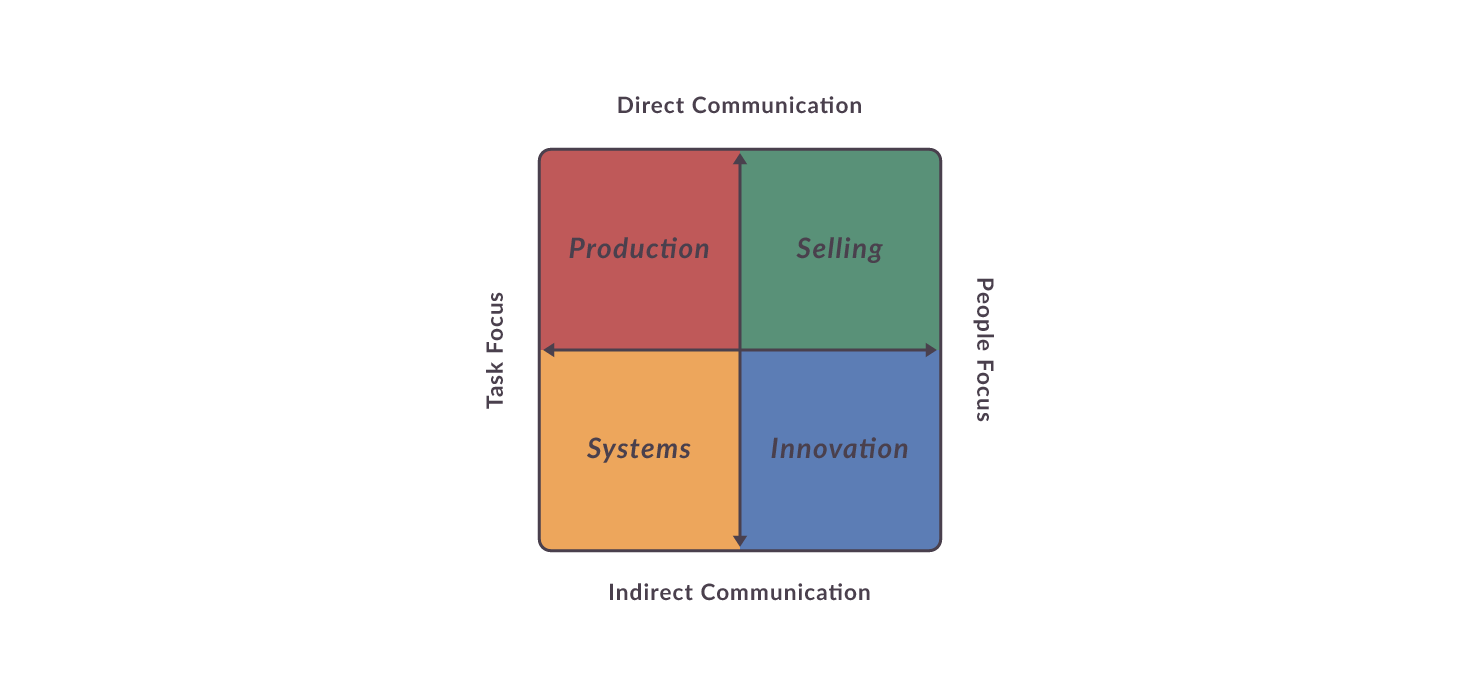
On the Grid: The Diagonal Axes
This is the second part in our On the Grid series, if you haven’t already check out Part 1: Map Reading
Now that you’re familiar with the Grid and each of the 4 colours, you can probably see why the 2 diagonals are considered ‘opposites’!
Before we get into that, here’s a quick recap:
- Red (Direct Communication + Task Focus): Production
- Blue (Indirect Communication + People Focus): Innovation
- Yellow (Indirect Communication + Task Focus): Systems
- Green (Direct Communication + People Focus): Selling

Red and Blue
At their simplest, Red is all about getting stuff done and Blue is all about coming up with new strategies. They both have really positive connotations, but left to their own devices neither colour is likely to do a great job…
By themselves, Blues tend to have great ideas, but may struggle to actually make them happen…
While Reds by themselves tend to just keep getting things done in the same old way, regardless of changing times…
But get Blues and Reds working together, and you get great new ideas, well executed.

Yellow and Green
As with Red and Blue, they each have their strengths - Yellow is all about keeping things running smoothly, and Green is all about getting things sold - but left to their own devices they may struggle to do a good job…
Yellows by themselves may have a great deal of system and process in place, but nothing much happens…
While Greens by themselves may seize great opportunities, but lose half through lack of system…
Get Yellows and Greens working together, and you get a system for generating new sales, and capturing opportunities.

The opposites I’ve just described are the diagonal axes on the Grid.
The Red / Blue axis is what we call the New Product Axis, because it covers the behaviours and perspectives that relate to envisaging, designing and creating new ‘products’ (whether those are physical products or virtual; services, materials, content or whatever).
The Yellow / Green axis we call the Doing the Business Axis, because it covers the behaviours and perspectives that relate to the business side of any business - the selling and administration, systems, processes, and interaction with customers etc.

Understanding the driving forces of these two axes should also illustrate to you why all four colours are vitally important in any organisation…
- You need people who can strategise and envision a product or service
- You need people who can turn that idea into a reality
- You need people who can sell that reality to others
- And you need people to make sure that the administrative side is all in order…
That may be an over-simplification of a far more complex system, but it gives you an idea of how these differing perspectives fit together.
